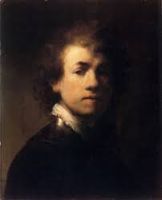Christine’s Blog - Light, the illusive everything…
Light is or should be the most important consideration in art. Light is how we see, and what we create when our art is visual. Artists can enhance their work with light, and there are exquisite masters in every generation who do that. Without light a piece can seem dull and uninteresting.
Light as a noun. The definitions are 1.“the natural agent that stimulates sight and makes things visibleâ€. 2. “The understanding of a problem or mystery; enlightenment.â€
Light as a verb. The definitions are 1. “provide with light or lighting; illuminate.†2. “make something start burning, ignite.â€
Light as an adjective. The definitions are 1. “having a considerable or sufficient amount of natural light; not dark. 2. “Paleâ€.
Artist seek to enhance the light, create a glow, make the light draw the eye and make the shadows compliment the light. I wish I had better control over light. Sometimes I get it, sometimes not, but it is always at the forefront of my thought. Light defines our world. Without light there is no color. If you go into your darkest room, and you block light coming through the window, shut off all lights, the color of your walls will change. The hue will change on the wall going up to intersect with the ceiling and going to the floor because of shadow. If the room is completely dark the color is very muted. It’s the same in an artists studio. I like natural light, so I take paintings outside in the natural light and I make notes, and I study every single inch. Am I making the most of the light? Am I translating the light in this piece so that the eye goes where I intended? What color did my paint change to when I took it outside?
Rembrandt was a master at using light to draw the eye and get the eye to travel as Rembrandt intended. There is a technique used in photography studios called Rembrandt Lighting. Cecile DeMille is credited with naming the technique. It is achieved by using one light and a reflector. It can create images that appear both compelling and natural. By seeing the light we can create depth, a defined space. The self portrait on the left below was painted in 1629 and the lighting technique is still used in portraits today, almost 400 years later! Thomas Kincaid was known for his presentation of light in his paintings. For me, it made his paintings come alive. Below is Carmel, Sunset on Ocean Avenue. If you took out the light how much life would you see, even with the activity in the streets? The light depicted in this painting leads a dance with  your eye around this painting to help you notice the details.
     Â
I plan to use the Northern Lights in a painting for my grandson who is due this week. So, I offer up Vincent Van Gogh’s The Starry Night. Vincent van Gogh painted Starry Night in 1889 during his stay at the asylum of Saint-Paul-de-Mausole near Saint-Rémy-de-Provence. The sky pulses and swirls with light. There are many different styles used by Van Gogh in this painting. Every single part of this painting were from his imagination. None of it resembles the area around the asylum he was in. It resonates with most of us. The sky roils, the clouds dance with the moon and the stars. It’s the light that helps us to see the world. Without this sky presented to us exactly as it is would we sense pulsation, or a gorgeous night at all?
|
 |
 |


